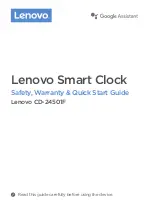
6. Digitally Controlled Oscillator (DCO) Modes
An output that is controlled as a DCO is useful for simple tasks such as frequency margining, CPU speed control, or just changing the
output frequency. The output can also be used for more sophisticated tasks such as FIFO management by adjusting the frequency of
the read or write clock to the FIFO or using the output as a variable Local Oscillator in a radio application.
6.1 Using the N Dividers for DCO Applications
The N dividers can be digitally controlled to so that all outputs connected to the N divider change frequency in real time without any
transition glitches. There are two ways to control the N divider to accomplish this task:
• Use the Frequency Increment/Decrement Pins or register bits.
• Write directly to the numerator or denominator of the N divider.
The output N divider can be changed from its minimum value of 10 to its maximum value of 4095 in very small fractional increments
or a single very large increment. Each N divider has a value of Nx_NUM/Nx_DEN. Nx_NUM is a 44 bit word and Nx_DEN is a 32 bit
word. Clockbuilder Pro left shifts these values as far as possible before writing them to the actual Nx_NUM and Nx_DEN registers. For
example, an integer Nx divider of 30/1, when left shifted, becomes Nx_NUM = 64424509440 (decimal) and Nx_DEN = 2147483648
(decimal). By adjusting the size of the Nx_NUM and Nx_DEN but keeping the ratio the same, the resolution of the LSbit of numerator or
denominator can be controlled.
When changing the N divider(s) to fractional values, the setting name N_PIBYP[4:0] must be a 0 for the N divider that is being changed.
This applies when using FINC/FDEC or when directly writing to the N divider.
6.1.1 DCO with Frequency Increment/Decrement Pins/Bits
The FSTEPW (Frequency STEP Word) is a 44 bit word that is used to change the value of the Nx_NUM word. Whenever an FINC or
FDEC is asserted, the FSTEPW will automatically add or subtract from the Nx_NUM word so that the output frequency will increment
(FINC) or decrement (FDEC) respectively.
Each of the N dividers can be independently stepped up or down in numerical predefined steps with a maximum resolution that varies
from ~ 0.05 ppb to a ~0.004 ppb depending upon the frequency plan. One or more N dividers can be controlled by FINC/FDEC at the
same time by use of the N_FSTEP_MSK bits. Any N divider that is masked by its corresponding bit in the N_FSTEP_MSK field will
not change when FINC or FDEC is asserted. The magnitude of the frequency change caused by FINC or FDEC is determined by the
value of the FSTEPW word and the magnitude of the word in Nx_NUM. For a specific frequency step size it may be necessary to adjust
the Nx_NUM value while keeping the ratio of Nx_NUM/Nx_DEN the same. When the FINC or FDEC pin or register bit is asserted the
selected N dividers will have their numerator changed by the addition or subtraction of the Nx_FSTEPW so that an FINC will increase
the output frequency and an FDEC will decrease the output frequency. An FINC or FDEC can be followed by another FINC or FDEC in
1 µs minimum.
Because the output frequency = F
VCO
* Nx_DEN/(Rx * Nx_NUM), subsequent changes to Nx_NUM by the FSTEPW will not produce
exactly the same output frequency change. The amount of error in the frequency step is extremely small and in a vast number of
applications will not cause a problem. When consecutive frequency steps must be exactly the same, it is possible to set FINC and
FDEC to change the Nx_DEN instead of Nx_NUM and then consecutive FINCs or FDECs will be exactly the same frequency change.
However, there are some special setups that are necessary to achieve this. For more information contact
6.1.2 DCO with Direct Register Writes
When a N divider numerator (Nx_NUM) and its corresponding update bit (Nx_UPDATE) is written, the new numerator value will take
effect and the output frequency will change without any glitches. The N divider numerator and denominator terms (Nx_NUM and
Nx_DEN) can be left and right shifted so that the least significant bit of the numerator word represents the exact step resolution that is
needed for your application. Each N divider has an update bit (Nx_UPDATE) that must be written to cause the written values to take
effect. All N dividers can be updated at the same time by writing the N_UPDATE_ALL bit. Note that writing this bit will not cause any
output glitching on an N divider that did not have its numerator or denominator changed.
When changing the N divider denominator (Nx_DEN) it is remotely possible that a small phase change of ~550 fs may occur at the
exact time of the frequency change. However with the proper setup it is possible to change Nx_DEN and never have a phase change. If
your application requires changing an N divider denominator, contact
.
6.2 Using the M Divider for DCO Applications
The VCO can be treated as a DCO by changing the value of the M feedback divider. By changing the M divider, all the output
frequencies will change by the same amount in ppm. Changing the M divider is only valid for small changes in the output frequencies.
Contact
for assistance in the implementation of this capability.
Si5341, Si5340 Rev D Family Reference Manual • Digitally Controlled Oscillator (DCO) Modes
Skyworks Solutions, Inc. • Phone [781] 376-3000 • Fax [781] 376-3100 • [email protected] • www.skyworksinc.com
34
Rev. 1.3 • Skyworks Proprietary Information • Products and Product Information are Subject to Change Without Notice • July 26, 2021
34
















































